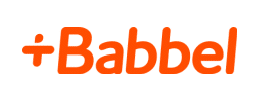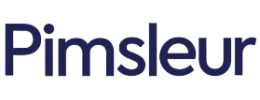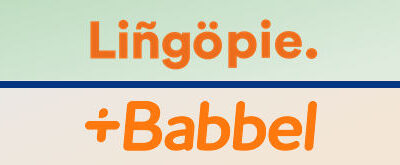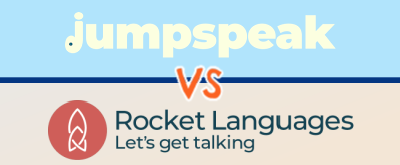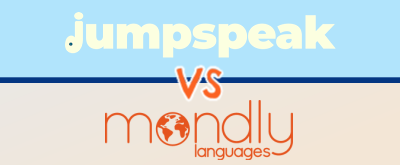Babbel and Pimsleur are two of the most popular language learning apps in the entire world, each with its own cult following. And while both get results, they are definitely better suited to different types of learners and situations. In this comparison, we take a look at the pros and cons of each language program so you can pick the right one for your specific learning style.
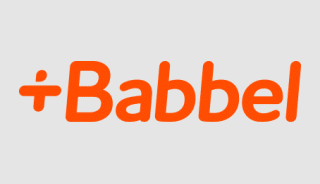
Sale: 55% OFF
Applied in Cart
|
$8-$15/mo |
Your best bet for beginners and budget shoppers. The perfect introduction app with fast-moving lessons, a cheap price tag, and essential content. |
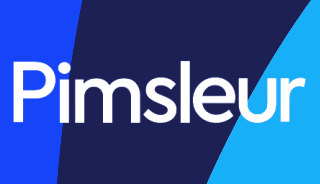
Free 7-Day Trial
Sign Up Today
|
$20/mo |
Pimsleur offers in-depth audio lessons, smart exercises, and rigorous content. It is a more robust and intensive language program than Babbel. |
Video Review: Babbel Or Pimsleur?
In the video above, Bianca from the Guide2Fluency team compares the language learning apps from Babbel and Pimsleur.
Editor’s Choice
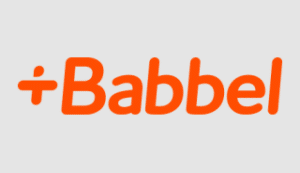
Babbel
- Multiple Subscription Options
- Money Back Guarantee
Pros
- Shorter, more diverse lessons than Pimsleur’s
- Extremely affordable (as low as $6 per month)
- Frequent review sessions to help with material retention
- Layered grammar instruction is very effective
- Live classes available for additional fee
Cons
- Not as much conversational practice as you get with Pimsleur
- Not ideal for advanced learners
How The Babbel & Pimsleur Apps Work
To begin this review, I want to provide a high-level overview of how each app works before diving into a more detailed explanation of each program’s strengths and weaknesses. This should help to provide some context for my thoughts below.
Babbel
In terms of organization of Babbel’s content, there are different learning levels within the program—Newcomer, Beginner, Intermediate, Advanced, etc.
Within each of these overarching levels, there are typically somewhere between 2 and 8 courses that cover different thematic topics, such as eating out, sports, travel, etc. Then within each course, there are anywhere from 5 to 15 lessons to complete.
Thus, to recap, think of the Babbel program structure like a pyramid. From the top down, it goes: Levels ➡️ Courses ➡️ Lessons
The lessons are your base units, and assuming you have no working knowledge of the language you’re learning, you’ll start with the Newcomer level. From there, you’ll shoot to complete one lesson per day, or at least a few lessons per week.
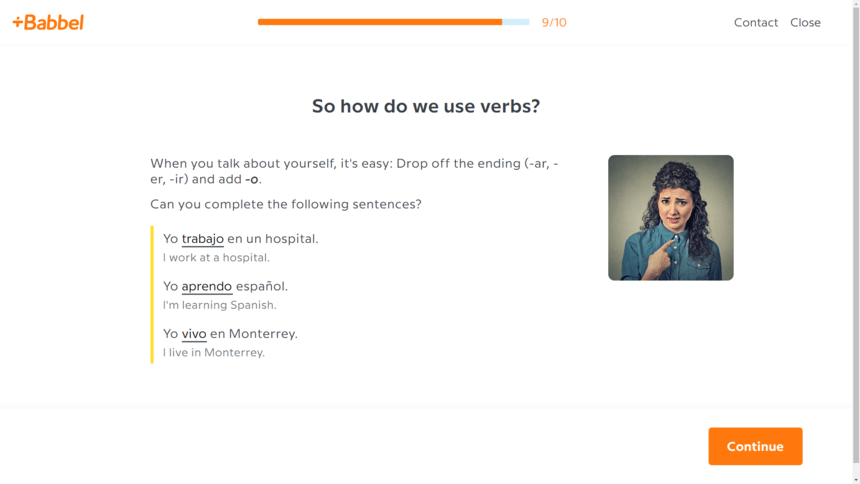
And as for the lessons themselves, each one is pretty short in length—generally about 15 minutes long. They go by pretty fast and are definitely shorter than doing an entire Pimsleur lesson, which take about an hour to complete from end to end.
The Babbel lessons are on the shorter side because each one is comprised of a series of several quick-hit, hands-on exercises. Within the program, there are listen-and-repeat exercises, digital flashcards, fill-in-the-blanks, matching pairs, matching phrases to images, completing mock conversations, short instructional tips on grammar, and a few more.
It’s a very diverse approach to learning in terms of format that moves fast. Babbel basically presents the same content for a lesson in a variety of ways and forces you to interact with the material.
Plus, before each lesson, there’s a daily review session where you get spaced repetition and review on vocab you’ve already learned in older lessons.
Pimsleur
In terms of how their program works, Pimsleur is very different from Babbel. Their program is grounded in audio lessons and conversational practice.
To start each lesson, you complete a 30-minute audio exercise, where a moderator speaking in English walks you through a guided conversation step-by-step. You listen to a few sentences in your target language, the moderator will briefly stop to explain the situation to you, and then he’ll have you participate by answering questions and repeating phrases.
This 30-minute audio exercise is truly the heart and soul of the Pimsleur lessons, and what they’re known for.
After the audio lesson, you review and reinforce what you just learned through a variety of drills and exercises. In this respect, it’s kind of like class followed by homework. These reinforcement drills include reading drills, digital flashcards, quizzes, pronunciation training, and speed games.
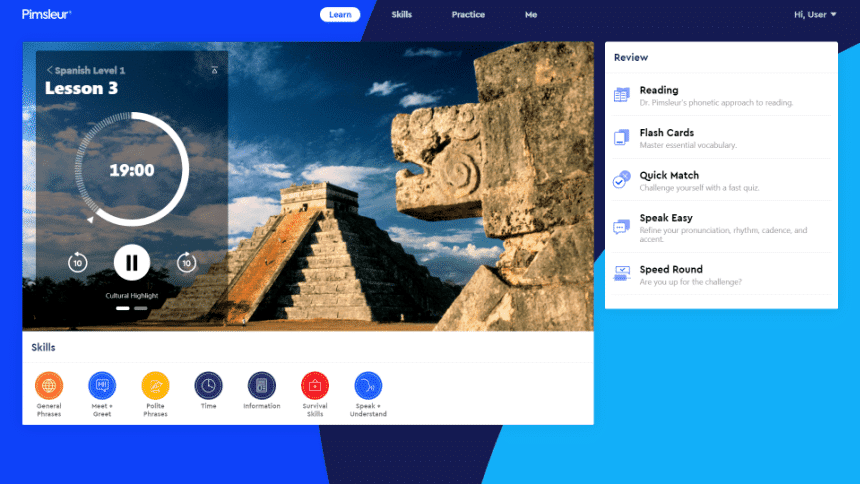
Plus, Pimsleur has some supplemental features too, like vocab bonus packs and pronunciation practice with their Voice Coach tool. That’s Pimsleur in a nutshell though. You’ve got core audio lessons followed by detailed review exercises, with a few bonus tools wrapped around it.
Stepping back, that’s how the two companies compare. The key takeaway here is that Babbel and Pimsleur are very different in how they teach you a new language.
Pimsleur lessons take close to an hour to complete from start to finish and place a very strong emphasis on listening and speaking in the context of simulated conversations, while the Babbel lessons are much shorter and hands-on, where you move through rapid fire drills.
Cost Comparison
Next, let’s briefly cover pricing and cost when it comes to these apps.
Babbel uses a pretty classic subscription model, which is fairly affordable. They offer three different subscription options: a 3-month plan, a 6-month plan and a 12-month plan, which range from around $6 to $10 per month after discounts. Plus, for those of who are maybe looking to learn two or three languages, Babbel also offers a one-time purchase, lifetime plan, which costs around $300 and includes access to all Babbel languages.
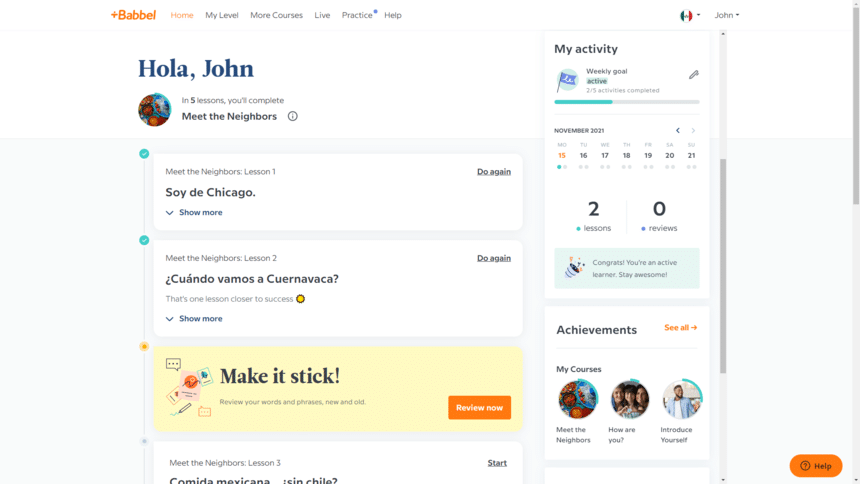
Conversely, Pimsleur also has a couple different plans, but both of which are just monthly, pay-as-you-go subscription options. First, there’s Pimsleur Premium, which gets you access to one language. That costs $20 per month. Then, there’s Pimsleur All Access. That gets you access to all 51 of Pimsleur’s languages and costs just a dollar more per month (i.e. $21 per month).
Putting this in perspective, in terms of cost, clearly Babbel is cheaper. On average, you’ll likely save around $10 to $14 per month with them, a pretty decent savings.
However, I would just note that both Pimsleur and Babbel are in pretty fierce competition with one another (and other apps like Rosetta Stone and Duolingo), and because of this, they’re both pretty aggressive with running sales and discounts where you can usually lock in a lower rate. So do make sure to check for coupons before buying.
Why Babbel Is Better Than Pimsleur
Now that we’ve touched on cost and how these two apps generally work, let’s start by discussing the major reasons you should consider using Babbel over Pimsleur to learn a new language.
Variety of Practice Drills
Right out of the gate, the thing I like most about Babbel’s program is the variety of drills and exercises. The Pimsleur audio lessons are great, and I believe they are genuinely effective, but they are essentially the same exercise, over and over.
In contrast, the Babbel lessons have a ton of variety in them, which keeps things more balanced and engaging. As noted earlier, you get listen-and-repeat exercises, digital flashcards, fill-in-the-blanks, matching pairs, matching phrases to images, mock conversations, short instructional tips on grammar, and some others.
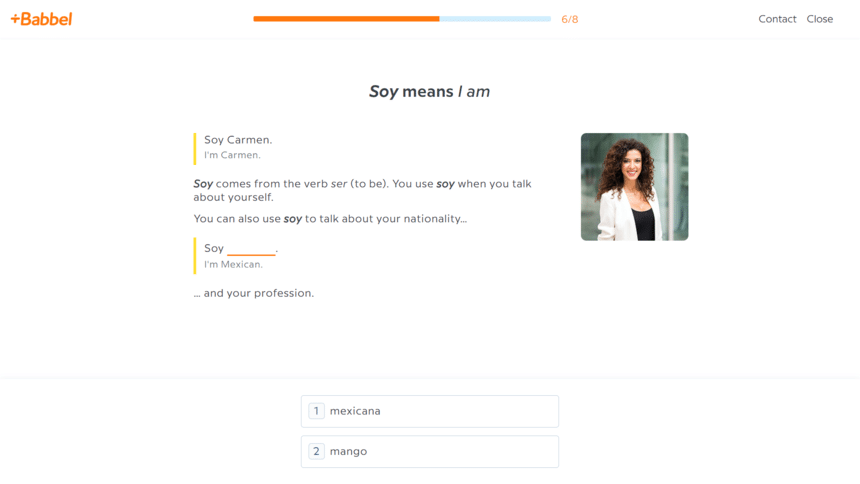
For me, the diversity in the Babbel drills is great for keeping you engaged during lessons.
Shorter Lesson Format
Next, piggybacking on that first point about lesson engagement, I like that Babbel’s lessons are shorter.
To complete a full Pimsleur lesson (that is, audio exercise plus the reinforcement drills), you’re looking at around a full hour. Now of course, you can always pause and stop a lesson halfway through for the day if you want, but I just prefer the short length of Babbel’s lessons.
At just 15 minutes, they are perfect for squeezing a lesson in on your lunch break or after dinner. They just don’t feel as mentally taxing and are more bite-sized.
Streamlined Grammar Content
My third win for Babbel is all about their grammar instruction. When it comes to grammar, Pimsleur does things a little differently.
Rather than offer more direct instruction, they kind of let you discover grammar intuitively through the audio lesson. The moderator will comment on grammar usage, such as verb conjugations and the like, but it’s not deep or direct grammar instruction—it’s more on you to intuitively pick up how the language works.
That methodology is fine and has its own merits, but I do really like how Babbel does it. They take a more direct approach by working grammar into each and every lesson with exercises that teach grammar directly, as well as tips and callout boxes that frequently appear to work in teaching points.
Grammar instruction is just more prevalent in the Babbel program and layered in through a very smart means.
Frequent Review Sessions
The final highlight of the Babbel program is their daily review sessions. Everyday when you log in to the Babbel app, you’re prompted to do a short review.
Basically, Babbel takes vocab from old lessons you’ve completed previously and pulls phrases back in for a spaced review.
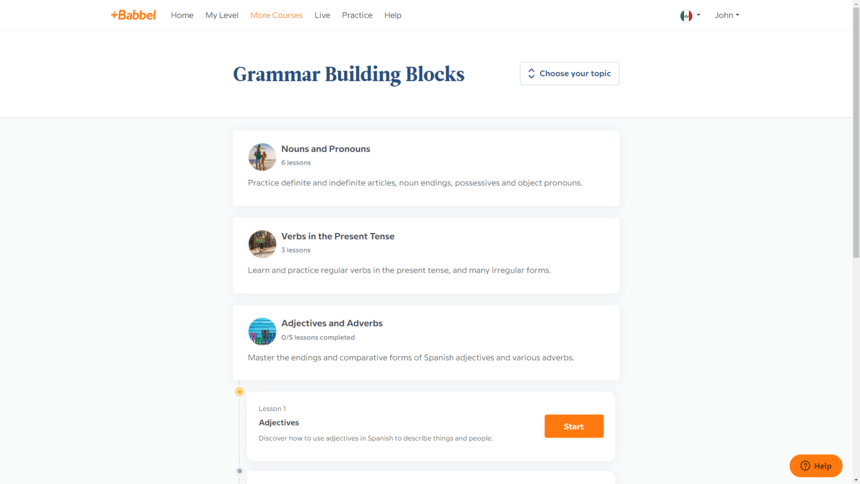
Therefore, over the course of the program, you’ll see every word or phrase at least a half dozen times over the course of several months. Plus, you can choose how you want to review—flashcards, listening, speaking, or writing.
Listening is my personal favorite, but I like that they give you the optionality, and their review system is really strong for getting you to remember and internalize new words and phrases. For reference, Pimsleur doesn’t have a formal review system, so this is a nice advantage for Babbel.
👉 Read Our Full Review of Babbel Spanish Here
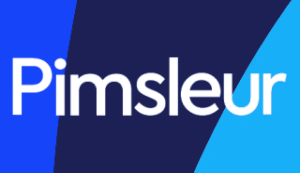
Pimsleur
- 50+ Languages
- Money Back Guarantee
Pros
- Effective teaching method based on organic learning and interval recall
- Engaging audio lessons that improve your listening and verbal skills
- Voice Coach feature for feedback on your pronunciation
- Special driving mode so you can complete lessons in the car
- Helpful reinforcement drills post-audio lesson
Cons
- Lessons take time to complete (~45 minutes)
- Content could incorporate more insights related to grammar and culture
Why Pimsleur Is Better Than Babbel
Having covered pricing, how the two programs work, and the strengths of the Babbel language courses, let’s get into what I like and dislike about Pimsleur.
Interactive Audio Lessons
The clearest highlight of the Pimsleur program is their series of audio lessons. Put simply, Pimsleur is much better than Babbel at developing your listening comprehension and speaking skills.
One of the biggest accelerants of learning a new language is getting frequent, heavy doses of verbalization. You need to routinely hear and speak the new language you’re learning to get comfortable with it, and Pimsleur offers more of an opportunity to do that than Babbel.
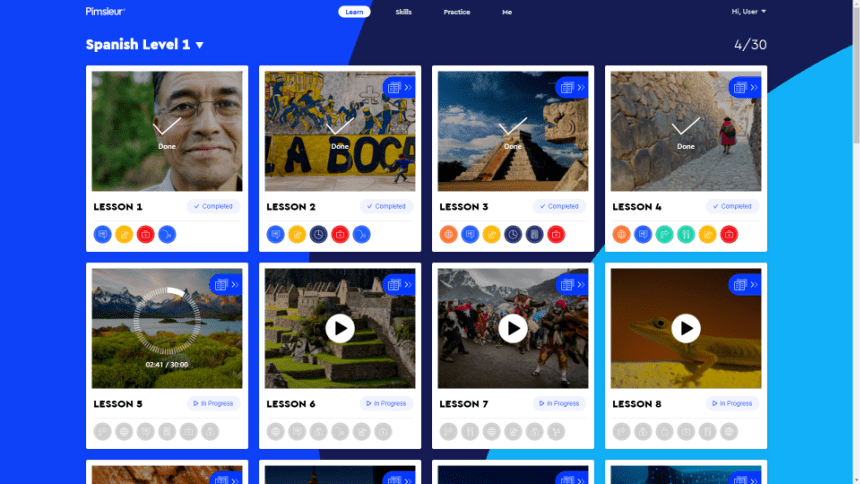
To be fair, Babbel does use a mock conversation in just about lesson as well, but each one is just 2-3 minutes long, and it’s nothing like what Pimsleur offers with their audio lessons.
The Pimsleur audio exercises are great at building your listening and speaking skills, and you’ll develop an ear for understanding the language much more quickly with their daily audio lessons.
Flexible Lesson Format
My second highlight for Pimsleur piggybacks on the first advantage. Because the Pimsleur audio lessons are audio-based, they’re a lot more flexible than Babbel’s lessons. Even though each Pimsleur lesson takes a lot longer to complete (about an hour vs 15 minutes for Babbel), the beauty of the 30-minute audio portion of each lesson is that you’re not tied to your phone.
For half of each Pimsleur lesson, you don’t have to be staring at a screen, matching word pairs and doing fill-in-the-blanks. With their audio lessons, you can hit play and go about whatever you’re doing.
You can do a lesson while you’re working out, folding laundry, gardening, doing the dishes, whatever. Basically, you can learn a language while doing any mindless task.
I just really like that you can be productive with your time while still doing a lesson. It’s a huge bonus to me. You can even do an audio lesson while driving because they have a special driving mode, which is really nice.
Pimsleur Voice Coach
Lastly, I need to give Pimsleur credit for their new Voice Coach feature.
In the last year or so, Pimsleur has rolled out a new voice recognition software tool that so far, is great. The program records you speaking different phrases, and then gives you feedback on your pronunciation on a star system basis.
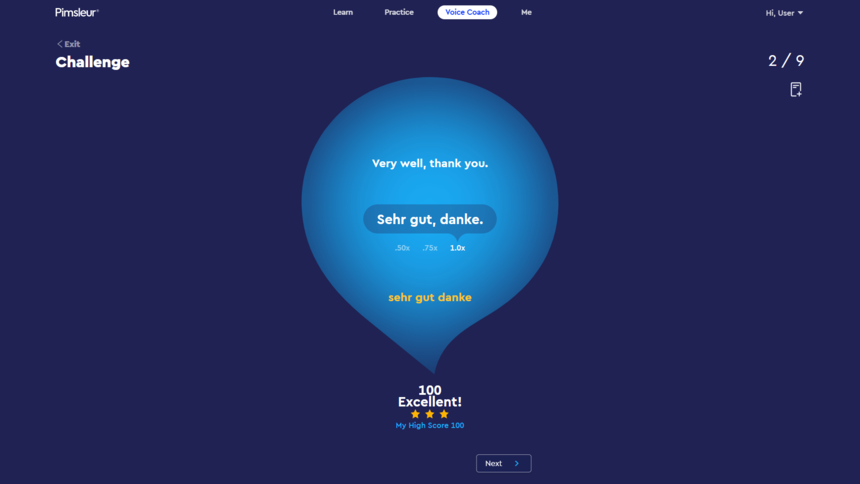
Thus far, the accuracy of the feedback is really strong. When you screw your pronunciation up, it will tell you with a poor grade. Plus, one feature that I especially like about it is challenge mode.
When you turn this on, you’ll be prompted in English to say a phrase in your target language with no hint as to how to say it. This makes you think critically about what to say, and you still need to master your pronunciation. It’s difficult, but quite helpful.
👉 Read Our Full Review of Pimsleur Spanish Here
Verdict: Which Language App Is Better?
This comparison is tough for me, and it’s really hard to pick just one language app. I really like Pimsleur for their deep and insightful audio lessons, supplemental drills, and their new Voice Coach feature.
However, I also like Babbel for their short, engaging lessons, spaced vocab reviews, and smart use of grammar. Both programs have way more pros than cons going for them, and I think they’re both effective.
That’s why I think it really comes down to personal preference and situation as to which is best. If you need shorter lessons because of time constraints (or you’re kind of ADD like me 🤪), then go with Babbel, their program will suit you well.
If, however, you have the time and patience for Pimsleur’s audio lessons, they are incredibly powerful, and I think will get you to fluency faster than just about any other tool.
That being said, at the end of the day, if you have the time and budget, the best choice might be to use both. I’ve done that and it seems to work pretty nicely—the programs complement each other really well. If you can do a couple full Pimsleur lessons per week, then fill in the smaller gaps in your day with Babbel, that would be a great combo.
After testing each language program, it’s a very close call; however, our team leans towards Pimsleur due in large part due to their comprehensive and insightful audio lessons.
Lesson format is one of the biggest differences between Pimsleur and Babbel. The Pimsleur lessons are longer and primarily revolve around interactive audio lessons with fluent speakers, whereas the Babbel lessons are shorter and include a greater variation of practice drills.
Yes, the Babbel subscription plans are more affordable than the Pimsleur plans on average.

